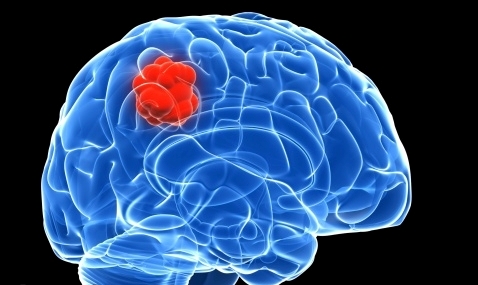- Home
- Editorial
- News
- Practice Guidelines
- Anesthesiology Guidelines
- Cancer Guidelines
- Cardiac Sciences Guidelines
- Critical Care Guidelines
- Dentistry Guidelines
- Dermatology Guidelines
- Diabetes and Endo Guidelines
- Diagnostics Guidelines
- ENT Guidelines
- Featured Practice Guidelines
- Gastroenterology Guidelines
- Geriatrics Guidelines
- Medicine Guidelines
- Nephrology Guidelines
- Neurosciences Guidelines
- Obs and Gynae Guidelines
- Ophthalmology Guidelines
- Orthopaedics Guidelines
- Paediatrics Guidelines
- Psychiatry Guidelines
- Pulmonology Guidelines
- Radiology Guidelines
- Surgery Guidelines
- Urology Guidelines
New method to kill brain cancer with skin cells

New York: In a first, researchers have developed a method to turn skin cells into cancer-hunting stem cells that can destroy brain tumours known as glioblastoma.
The discovery can offer, for the first time in more than 30 years, a new and more effective treatment for the disease, the study said.
"Patients desperately need a better standard of care," said Shawn Hingtgen, assistant professor at the University of North Carolina at Chapel Hill in the US.
The survival rate beyond two years for a patient with glioblastoma is 30 percent because it is so difficult to treat.
Even if a surgeon removes most of the tumour, it is nearly impossible to get the invasive, cancerous tendrils that spread deeper into the brain and inevitably the remnants grow back.
The new technique, reported in the journal Nature Communications, builds upon the newest version of the Nobel Prize-winning technology from 2007, which allowed researchers to turn skin cells into embryonic-like stem cells.
In their work, the research team reprogrammed skin cells known as fibroblasts - which produce collagen and connective tissue -- to become induced neural stem cells.
Working with mice, Hingtgen's team showed that these neural stem cells have an innate ability to move throughout the brain and home in on and kill any remaining cancer cells.
The team also showed that these stem cells could be engineered to produce a tumour-killing protein, adding another blow to the cancer.
Depending on the type of tumour, Hingtgen's team increased survival time of the mice from 160 to 220 percent.
The next steps will focus on human stem cells and testing more effective anti-cancer drugs that can be loaded into the tumour-seeking neural stem cells.
The discovery can offer, for the first time in more than 30 years, a new and more effective treatment for the disease, the study said.
"Patients desperately need a better standard of care," said Shawn Hingtgen, assistant professor at the University of North Carolina at Chapel Hill in the US.
The survival rate beyond two years for a patient with glioblastoma is 30 percent because it is so difficult to treat.
Even if a surgeon removes most of the tumour, it is nearly impossible to get the invasive, cancerous tendrils that spread deeper into the brain and inevitably the remnants grow back.
The new technique, reported in the journal Nature Communications, builds upon the newest version of the Nobel Prize-winning technology from 2007, which allowed researchers to turn skin cells into embryonic-like stem cells.
In their work, the research team reprogrammed skin cells known as fibroblasts - which produce collagen and connective tissue -- to become induced neural stem cells.
Working with mice, Hingtgen's team showed that these neural stem cells have an innate ability to move throughout the brain and home in on and kill any remaining cancer cells.
The team also showed that these stem cells could be engineered to produce a tumour-killing protein, adding another blow to the cancer.
Depending on the type of tumour, Hingtgen's team increased survival time of the mice from 160 to 220 percent.
The next steps will focus on human stem cells and testing more effective anti-cancer drugs that can be loaded into the tumour-seeking neural stem cells.
Next Story
NO DATA FOUND

Disclaimer: This site is primarily intended for healthcare professionals. Any content/information on this website does not replace the advice of medical and/or health professionals and should not be construed as medical/diagnostic advice/endorsement or prescription. Use of this site is subject to our terms of use, privacy policy, advertisement policy. © 2020 Minerva Medical Treatment Pvt Ltd